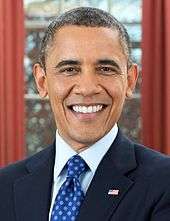Asia-Pacific Economic Cooperation
Asia-Pacific Economic Cooperation (APEC) |
||||
|---|---|---|---|---|
|
||||
.svg.png) APEC member economies shown in green.
|
||||
| Headquarters | ||||
| Type | Economic meeting | |||
| Membership | ||||
| Leaders | ||||
| • | APEC Host Economy 2016 | |||
| • | Executive Director | Alan Bollard | ||
| Establishment | 1989 | |||
| Website www.apec.org |
||||
Asia-Pacific Economic Cooperation (APEC) is a forum for 21 Pacific Rim member economies[2] that promotes free trade throughout the Asia-Pacific region. It was established in 1989 in response to the growing interdependence of Asia-Pacific economies and the advent of regional trade blocs in other parts of the world; to defuse fears that highly industrialised Japan (a member of G8) would come to dominate economic activity in the Asia-Pacific region; and to establish new markets for agricultural products and raw materials beyond Europe.[3]
An annual APEC Economic Leaders' Meeting is attended by the heads of government of all APEC members except Taiwan (which is represented by a ministerial-level official under the name Chinese Taipei as economic leader[4]). The location of the meeting rotates annually among the member economies, and a famous tradition, followed for most (but not all) summits, involves the attending leaders dressing in a national costume of the host country.
History

In January 1989, Australian Prime Minister Bob Hawke called for more effective economic cooperation across the Pacific Rim region. This led to the first meeting of APEC in the Australian capital of Canberra in November, chaired by Australian Foreign Affairs Minister Gareth Evans. Attended by ministers from twelve countries, the meeting concluded with commitments for future annual meetings in Singapore and Korea.
Countries of the Association of Southeast Asian Nations (ASEAN) opposed the initial proposal, instead proposing the East Asia Economic Caucus which would exclude non-Asian countries such as the United States, Canada, Australia, and New Zealand. This plan was opposed because of the member countries in the America Region, and strongly criticized by Japan and the United States.
The first APEC Economic Leaders' Meeting occurred in 1993 when U.S. President Bill Clinton, after discussions with Australian Prime Minister Paul Keating, invited the heads of government from member economies to a summit on Blake Island. He believed it would help bring the stalled Uruguay Round of trade talks back on track. At the meeting, some leaders called for continued reduction of barriers to trade and investment, envisioning a community in the Asia-Pacific region that might promote prosperity through cooperation. The APEC Secretariat, based in Singapore, was established to coordinate the activities of the organization.
During the meeting in 1994 in Bogor, Indonesia, APEC leaders adopted the Bogor Goals that aim for free and open trade and investment in the Asia-Pacific by 2010 for industrialized economies and by 2020 for developing economies. In 1995, APEC established a business advisory body named the APEC Business Advisory Council (ABAC), composed of three business executives from each member economy.
In April 2001, the APEC, in collaboration with five other international organisations (Eurostat, IEA, OLADE, OPEC and the UNSD) launched the Joint Oil Data Exercise, which in 2005 became the Joint Organisations Data Initiative (JODI).
Member economies

APEC currently has 21 members, including most countries with a coastline on the Pacific Ocean. However, the criterion for membership is that the member is a separate economy, rather than a state. As a result, APEC uses the term member economies rather than member countries to refer to its members. One result of this criterion is that membership of the forum includes Taiwan (officially the Republic of China, participating under the name "Chinese Taipei") alongside People's Republic of China (see Cross-Strait relations), as well as Hong Kong, which entered APEC as a British colony but it is now a Special Administrative Region of the People's Republic of China. APEC also includes three official observers: ASEAN, the Pacific Islands Forum and the Pacific Economic Cooperation Council.[2]
| Member economie(s) | Name as used in APEC | Date of accession | GDP(PPP) (Millions of Int$) 2014 |
|---|---|---|---|
| |
Australia | November 1989 | 1,099,771 |
| |
Brunei Darussalam | November 1989 | 32,958 |
| |
Canada | November 1989 | 1,595,975 |
| |
Indonesia | November 1989 | 2,685,893 |
| |
Japan | November 1989 | 4,767,157 |
| |
Republic of Korea | November 1989 | 1,783,950 |
| |
Malaysia | November 1989 | 769,448 |
| |
New Zealand | November 1989 | 160,801 |
| |
The Philippines | November 1989 | 857,457 |
| |
Singapore | November 1989 | 454,346 |
| |
Thailand | November 1989 | 1,069,569 |
| |
The United States | November 1989 | 17,348,075 |
| |
Chinese Taipei[5] | November 1991 | 1,078,792 |
| |
Hong Kong, China[6] | November 1991 | 400,362 |
| |
People's Republic of China | November 1991 | 18,088,054 |
| |
Mexico | November 1993 | 2,148,884 |
| |
Papua New Guinea | November 1993 | 18,595 |
| |
Chile | November 1994 | 410,853 |
| |
Peru | November 1998 | 372,694 |
| |
Russian | November 1998 | 3,576,841 |
| |
Viet Nam | November 1998 | 512,582 |
Possible enlargement

India has requested membership in APEC, and received initial support from the United States, Japan,[7] Australia and Papua New Guinea.[8] Officials have decided not to allow India to join for various reasons.India does not border the Pacific Ocean, which all current members do.[9] However, India was invited to be an observer for the first time in November 2011.[10]
Bangladesh,[11] Pakistan,[11] Sri Lanka,[11] Macau,[11] Mongolia,[11] Laos,[11] Cambodia,[12] Costa Rica,[13] Colombia,[13][14] Panama,[13] and Ecuador,[15] are among a dozen other economies that have applied for membership in APEC. Colombia applied for APEC's membership as early as in 1995, but its bid was halted as the organisation stopped accepting new members from 1993 to 1996,[16] and the moratorium was further prolonged to 2007 due to the 1997 Asian Financial Crisis. Guam has also been actively seeking a separate membership, citing the example of Hong Kong, but the request is opposed by the United States, which currently represents Guam. Fiji might consider to join APEC sometime in the future, despite opposition from Australia and New Zealand due to the coups d'etat.
Business Facilitation
APEC has long been at the forefront of reform efforts in the area of business facilitation. Between 2002 and 2006 the costs of business transactions across the region was reduced by 6%, thanks to the APEC Trade Facilitation Action Plan (TFAPI). Between 2007 and 2010, APEC hopes to achieve an additional 5% reduction in business transaction costs. To this end, a new Trade Facilitation Action Plan has been endorsed. According to a 2008 research brief published by the World Bank as part of its Trade Costs and Facilitation Project, increasing transparency in the region's trading system is critical if APEC is to meet its Bogor Goal targets.[17] The APEC Business Travel Card, a travel document for visa-free business travel within the region is one of the concrete measures to facilitate business. In May 2010 Russia joined the scheme, thus completing the circle.[18]
Proposed Free Trade Area of the Asia-Pacific
APEC first formally started discussing the concept of a Free Trade Area of the Asia-Pacific (FTAAP) at its summit in 2006 in Hanoi. However, the proposal for such an area has been around since at least 1966 and Japanese economist Kiyoshi Kojima's proposal for a Pacific Free Trade agreement proposal. While it gained little traction, the idea led to the formation of Pacific Trade and Development Conference and then the Pacific Economic Cooperation Council in 1980 and then APEC in 1989.
In the wake of the 2006 summit, economist C. Fred Bergsten advocated a Free Trade Agreement of Asia-Pacific, including the United States amongst the proposed parties to any agreement at that time.[19] His ideas convinced the APEC Business Advisory Council to support this concept. Relatedly, ASEAN and existing free trade agreement (FTA) partners are negotiating as Regional Comprehensive Economic Partnership (RCEP), not officially including Russia.[20] The Trans-Pacific Partnership (TPP) without China or Russia involved has become the US-promoted trade negotiation in the region. At the APEC summit in Beijing in 2014, the three plans were all in discussion.[21] President Obama hosted a TPP meeting at the US Embassy in Beijing in advance of the APEC gathering.[22]
The proposal for a FTAAP arose due to the lack of progress in the Doha round of World Trade Organization negotiations, and as a way to overcome the "noodle bowl" effect created by overlapping and conflicting elements of the copious free trade agreements — there were approximately 60 free trade agreements in 2007, with an additional 117 in the process of negotiation in Southeast Asia and the Asia-Pacific region.[23] In 2012, ASEAN+6 countries alone had 339 free trade agreements - many of which were bilateral.[24]
The FTAAP is more ambitious in scope than the Doha round, which limits itself to reducing trade restrictions. The FTAAP would create a free trade zone that would considerably expand commerce and economic growth in the region.[23][25] The economic expansion and growth in trade could exceed the expectations of other regional free trade areas such as the ASEAN Plus Three (ASEAN + China, South Korea and Japan).[26] Some criticisms include that the diversion of trade within APEC members would create trade imbalances, market conflicts and complications with nations of other regions.[25] The development of the FTAAP is expected to take many years, involving essential studies, evaluations and negotiations between member economies.[23] It is also affected by the absence of political will and popular agitations and lobbying against free trade in domestic politics.[23][27]
At the 2014 APEC summit in Beijing, APEC leaders agreed to launch "a collective strategic study" on the FTAAP and instruct officials to undertake the study, consult stakeholders and report the result by the end of 2016.[28] APEC Executive Director Alan Bollard revealed in the Elite Talk show that FTAAP will be APEC's big goal out into the future.[29]
The Trans-Pacific Partnership includes 12 of the 21 APEC members and has provisions for the accession of other APEC members, five of which have expressed interest in membership.
APEC Study Centre Consortium
In 1993, APEC Leaders decided to establish a network of APEC Study Centres among universities and research institutions in member economies.[30]
Notable centers include:
- Australian APEC Study Centre, Royal Melbourne Institute of Technology, Australia[31]
- Berkeley APEC Study Center, University of California, Berkeley, United States[32]
- Chinese Taipei APEC Study Centre, Taiwan Institute of Economic Research, Taiwan[33]
- HKU APEC Study Centre, University of Hong Kong, Hong Kong[34]
- Kobe APEC Study Centre, Kobe University, Japan[35]
- Nankai APEC Study Centre, Nankai University, China[36]
- Philippines APEC Study Center Network, Philippine Institute for Development Studies, Philippines
- The Canadian APEC Study Centre, The Asia Pacific Foundation of Canada, Vancouver, British Columbia, Canada[37]
- Indonesian APEC Study Centre, APEC Study Centre University of Indonesia, Indonesia.[38]
- India APEC Study Centre, Mumbai University, India.
APEC Business Advisory Council
The APEC Business Advisory Council (ABAC) was created by the APEC Economic Leaders in November 1995 with the aim of providing advice to the APEC Economic Leaders on ways to achieve the Bogor Goals and other specific business sector priorities, and to provide the business perspective on specific areas of cooperation.
Each economy nominates up to three members from the private sector to ABAC. These business leaders represent a wide range of industry sectors. ABAC provides an annual report to APEC Economic Leaders containing recommendations to improve the business and investment environment in the Asia-Pacific region, and outlining business views about priority regional issues. ABAC is also the only non-governmental organisation that is on the official agenda of the APEC Economic Leader's Meeting.
Annual APEC Economic Leaders' Meetings
Since its formation in 1989, APEC has held annual meetings with representatives from all member economies. The first four annual meetings were attended by ministerial-level officials. Beginning in 1993, the annual meetings are named APEC Economic Leaders' Meetings and are attended by the heads of government from all member economies except Taiwan, which is represented by a ministerial-level official. The annual Leaders' Meetings are not called summits.
Meeting developments
In 1997, the APEC meeting was held in Vancouver. Controversy arose after officers of the Royal Canadian Mounted Police used pepper spray against protesters. The protesters objected to the presence of autocratic leaders such as Indonesian president Suharto.[39][40][41][42][43][44]
At the 2001 Leaders' Meeting in Shanghai, APEC leaders pushed for a new round of trade negotiations and support for a program of trade capacity-building assistance, leading to the launch of the Doha Development Agenda a few weeks later. The meeting also endorsed the Shanghai Accord proposed by the United States, emphasising the implementation of open markets, structural reform, and capacity building. As part of the accord, the meeting committed to develop and implement APEC transparency standards, reduce trade transaction costs in the Asia-Pacific region by 5 percent over 5 years, and pursue trade liberalisation policies relating to information technology goods and services.
In 2003, Jemaah Islamiah leader Riduan Isamuddin had planned to attack the APEC Leaders Meeting to be held in Bangkok in October. He was captured in the city of Ayutthaya, Thailand by Thai police on August 11, 2003, before he could finish planning the attack. Chile became the first South American nation to host the Leaders' Meeting in 2004. The agent of that year was focused on terrorism and commerce, small and medium enterprise development, and contemplation of free agreements and regional trade agreements.
The 2005 Leaders' Meeting was held in Busan, South Korea. The meeting focused on the Doha round of World Trade Organization (WTO) negotiations, leading up to the WTO Ministerial Conference of 2005 held in Hong Kong in December. Weeks earlier, trade negotiations in Paris were held between several WTO members, including the United States and the European Union, centred on reducing agricultural trade barriers. APEC leaders at the summit urged the European Union to agree to reducing farm subsidies. In a continuation of the climate information sharing initiative established by APEC Climate Network working group, it was decided by the leaders to install the APEC Climate Center in Busan. Peaceful protests against APEC were staged in Busan, but the meeting schedule was not affected.
At the Leaders' Meeting held on November 19, 2006 in Hanoi, APEC leaders called for a new start to global free-trade negotiations while condemning terrorism and other threats to security. APEC also criticised North Korea for conducting a nuclear test and a missile test launch that year, urging the country to take "concrete and effective" steps toward nuclear disarmament. Concerns about nuclear proliferation in the region was discussed in addition to economic topics. The United States and Russia signed an agreement as part of Russia's bid to join the World Trade Organization.
The APEC Australia 2007 Leaders' Meeting was held in Sydney from 2–9 September 2007. The political leaders agreed to an "aspirational goal" of a 25% reduction of energy intensity correlative with economic development.[45] Extreme security measures including airborne sharpshooters and extensive steel-and-concrete barricades were deployed against anticipated protesters and potential terrorists. However, protest activities were peaceful and the security envelope was penetrated with ease by a spoof diplomatic motorcade manned by members of the Australian television program The Chaser, one of whom was dressed to resemble the Al-Qaeda leader Osama bin Laden.
The APEC USA 2011 Leaders' Meeting was held on Honolulu, Hawaii 8–13 November 2011.[46]
APEC Leaders' Family Photo
At the end of the APEC Economic Leaders' Meeting, the leaders in attendance gather for what is officially known as the APEC Leaders' Family Photo. A long-standing tradition for this photo involved the attending leaders dressing in a costume that reflects the culture of the host member. The tradition dates back to the first such meeting in 1993 when then-U.S. President Bill Clinton outfitted the leaders in leather bombardier jackets. However, at the 2010 meeting, Japan opted to have the leaders dress in smart casual rather than the traditional kimono.[47] Similarly, when Honolulu was selected in 2009 as the site for the 2011 APEC meeting, U.S. President Barack Obama joked that he looked forward to seeing the leaders dressed in "flowered shirts and grass skirts". However, after viewing previous photos, and concerned that having the leaders dress in aloha shirts might give the wrong impression during a period of economic austerity, Obama decided that it might be time to end the tradition. Leaders were given a specially designed aloha shirt as a gift but were not required to wear it for the photo.[48] However at the 2013 conference in Bali, Indonesia, leaders are toned with Batik outfit.
Meeting locations
The location of the meeting is rotated annually among the members.
| Year | # | Dates | Country | City | Web site |
|---|---|---|---|---|---|
| 1989 | 1st | November 6–7 | | Canberra | |
| 1990 | 2nd | July 29–31 | | Singapore | |
| 1991 | 3rd | November 12–14 | | Seoul | |
| 1992 | 4th | September 10–11 | | Bangkok | |
| 1993 | 5th | November 19–20 | | Seattle | |
| 1994 | 6th | November 15–16 | | Bogor | |
| 1995 | 7th | November 18–19 | | Osaka | |
| 1996 | 8th | November 24–25 | | Subic | |
| 1997 | 9th | November 24–25 | | Vancouver | |
| 1998 | 10th | November 17–18 | | Kuala Lumpur | |
| 1999 | 11th | September 12–13 | | Auckland | |
| 2000 | 12th | November 15–16 | | Bandar Seri Begawan | |
| 2001 | 13th | October 20–21 | | Shanghai | |
| 2002 | 14th | October 26–27 | | Los Cabos | |
| 2003 | 15th | October 20–21 | | Bangkok | |
| 2004 | 16th | November 20–21 | | Santiago | |
| 2005 | 17th | November 18–19 | | Busan | |
| 2006 | 18th | November 18–19 | | Hanoi | |
| 2007 | 19th | September 8–9 | | Sydney | |
| 2008 | 20th | November 22–23 | | Lima | |
| 2009 | 21st | November 14–15 | | Singapore | |
| 2010 | 22nd | November 13–14 | | Yokohama | [49] |
| 2011 | 23rd | November 12–13 | | Honolulu | |
| 2012 | 24th | September 9–10 | | Vladivostok | |
| 2013 | 25th | October 5–7 | | Bali | |
| 2014 | 26th | November 10–11 | | Beijing | |
| 2015 | 27th | November 18–19 | | Manila | |
| 2016 | 28th | November 19–20 | | Lima | |
| 2017 | 29th | November | | Đà Nẵng | |
| 2018 | 30th | TBA | | Port Moresby | |
| 2019 | 31st | TBA | | TBA | |
| 2020 | 32nd | TBA | | TBA | |
| 2021 | 33rd | TBA | | TBA | |
| 2022 | 34th | TBA | | TBA | |
| 2023 | 35th | TBA | | TBA | |
| 2024 | 36th | TBA | | TBA | |
| 2025 | 37th | TBA | | TBA | |
| 2026 | 38th | TBA | | TBA | |
Criticism
APEC has been criticised for promoting free trade agreements that would impose restrictions on national and local laws, which regulate and ensure labor rights, environmental protection and safe and affordable access to medicine.[50] According to the organization, it is "the premier forum for facilitating economic growth, cooperation, trade and investment in the Asia-Pacific region" established to "further enhance economic growth and prosperity for the region and to strengthen the Asia-Pacific community".[51] However, whether it has accomplished anything constructive remains debatable, especially from the viewpoints of European countries that cannot take part in APEC[52] and Pacific Island nations that cannot participate but will suffer its consequences.
Current leaders of APEC Economies
- ^ a b Due to the complexities of the relations between it and the People's Republic of China, the Republic of China (ROC or "Taiwan") is not represented under its official name "Republic of China" or as "Taiwan". Instead, it participates in APEC under the name "Chinese Taipei". The President of the Republic of China does not attend the annual APEC Economic Leaders' Meeting in person. Instead, it is generally represented by a ministerial-level official responsible for economic affairs or someone designated by the president. See List of Chinese Taipei Representatives to APEC.
See also
- ASEAN Free Trade Area
- Asia-Europe Meeting
- Asia-Pacific Trade Agreements Database
- East Asia Economic Caucus
- East Asia Summit
- Pacific Alliance
- Pacific Economic Cooperation Council
- G20
- Other organisations of coastal states
- Bay of Bengal Initiative
- Black Sea Economic Cooperation
- Indian Ocean Rim Association for Regional Cooperation
- Union for the Mediterranean
References
- ↑ APEC. "Member Economies". Asia-Pacific Economic Cooperation. Retrieved 2016-09-24.
- 1 2 Member Economies - Asia-Pacific Economic Cooperation. Apec.org. Retrieved on 2014-04-12.
- ↑ CHAPTER 5, Back to Canberra: Founding APEC
- ↑ Conditions not right for APEC attendance: Ma. The China Post (2013-08-27). Retrieved on 2014-04-12.
- ↑ Due to the complexities of the relations between it and the People's Republic of China, the Republic of China (ROC or "Taiwan") is not represented under its official name "Republic of China" or as "Taiwan". Instead, it participates in APEC under the name "Chinese Taipei". The President of the Republic of China does not attend the annual APEC Economic Leaders' Meeting in person. Instead, it is generally represented by a ministerial-level official responsible for economic affairs or someone designated by the president. See List of Chinese Taipei Representatives to APEC.
- ↑ Hong Kong joined APEC in 1991 during British administration with the name "Hong Kong." In 1997, Hong Kong became a Special Administrative Region of the People's Republic of China and took the name "Hong Kong, China."
- ↑ 5 Minutes 10 Minutes (2007-01-12). "APEC 'too busy' for free trade deal, says Canberra". Theaustralian.news.com.au. Retrieved 2011-11-04.
- ↑ "Media Statement by the President of India upon the conclusion of his state visit to Papua New Guinea and New Zealand en route from Auckland to New Delhi". pib.nic.in. Retrieved 2016-10-08.
- ↑ "AFP: West worried India would tip APEC power balance: official". Afp.google.com. 2007-09-06. Archived from the original on 2011-11-05. Retrieved 2011-11-04.
- ↑ Archived February 24, 2015, at the Wayback Machine.
- 1 2 3 4 5 6 Macau is one of 11 economies to have officially applied for membership, along with Bangladesh, Pakistan, Macau, Mongolia, Laos, Panama, Colombia, Costa Rica, Sri Lanka and Ecuador.
- ↑ India and at least 12 other countries ranging from Latin and Central American nations to Cambodia, Mongolia and Pakistan and Sri Lanka will not be included in the APEC forum for at least three years.
- 1 2 3 Leff, Alex (2011-06-22). "Costa Rica Inches Toward Coveted APEC Membership". Americas Quarterly. Retrieved 2011-06-22.
- ↑ "Peru, Colombia seek closer Central America, APEC trade ties –". Dominicantoday.com. 2006-08-29. Retrieved 2011-11-04.
- ↑ english@peopledaily.com.cn (2004-10-08). "People's Daily Online – Ecuador seeks APEC accession in 2007". English.people.com.cn. Retrieved 2011-11-04.
- ↑ "People's Daily Online – Colombia seeks APEC membership in 2007: FM". English.people.com.cn. 2006-09-06. Retrieved 2011-11-04.
- ↑ "Transparency Reform Could Raise Trade by $148 Billion in APEC" Archived May 30, 2008, at the Wayback Machine. John S. Wilson & Benjamin Taylor; Trade Facilitation Reform Research Brief, The World Bank. 2008.
- ↑ "Russia joins the APEC Business Travel Card Scheme". apec.org. Sapporo. 29 May 2010. Retrieved 2015-08-05.
- ↑ Bergsten, C. Fred, "Toward a Free Trade Area of the Asia Pacific", Peterson Institute for International Economics Number Pb07-2. Pdf can be found via Google. Retrieved 2014-11-09.
- ↑ "China-led RCEP trade talks to begin in May", thebricspost.com, April 25, 2013. Retrieved 2014-11-10.
- ↑ "China's President Xi touts 'Asia-Pacific dream' ahead of APEC summit", Deutsche Welle, November 9, 2014. Retrieved 2014-11-09.
- ↑ Goodman, Lee-Anne, "Harper, Obama attend Asia-Pacific trade deal meeting in Beijing", The Canadian Press, November 10, 2014. Retrieved 2014-11-10.
- 1 2 3 4 September 2007 — (2011-09-13). "FTAAP". Brookings.edu. Retrieved 2011-11-04.
- ↑ "As of January 2012 ASEAN countries have 186 FTAs implemented, signed, under negotiation or under proposal/study, which is substantial progress since… 1992. The ASEAN+6 countries have a total of 339 FTAs, including between ASEAN countries and the '+6' countries." -- Chia, Siow Yue. "The Emerging Regional Economic Integration Architecture in East Asia". Asian Economic Papers (MIT Press). Vol. 12, No. 1 (2013): p. 1-37
- 1 2 "Plan B for World Trade". Petersoninstitute.org. Retrieved 2011-11-04. No reference to numbers of FTAs.
- ↑ Policy Briefs in International Economics (PDF)
- ↑ The Pacific Economic Cooperation Council - FTAAP. PECC. Retrieved on 2013-07-12.
- ↑ "APEC roadmap on FTAAP a historic decision: Xi". Xinhua, November 11, 2014
- ↑ "Elite Talk: A talk with APEC chief Alan Bollard on China, FTAAP, New Silk Road". People's Daily Online, November 10, 2014
- ↑ APEC Study Center Contortium Archived December 1, 2010, at the Wayback Machine.
- ↑ "Australian APEC Study Centre". Apec.org.au. Retrieved 2011-11-04.
- ↑ "Berkeley APEC Study Center". Basc.berkeley.edu. Retrieved 2011-11-04.
- ↑ "Chinese Taipei APEC Study Center". Ctasc.org.tw. Retrieved 2011-11-04.
- ↑ "HKU APEC Study Center". Hku.hk. Retrieved 2011-11-04.
- ↑ "Kobe University APEC Study Center". Rieb.kobe-u.ac.jp. Retrieved 2011-11-04.
- ↑ APEC Study Center of Nankai University
- ↑ "The Canadian APEC Study Centre, The Asia Pacific Foundation of Canada". Asiapacific.ca. Retrieved 2011-11-04.
- ↑ "ASC UI". ASC UI. Retrieved 2011-11-04.
- ↑ Pue, W. Wesley (2000). Pepper in our Eyes: the APEC Affair. Vancouver, British Columbia, Canada: UBC Press. ISBN 0-7748-0779-2.
- ↑ Wallace, Bruce (September 21, 1998). "APEC Protest Controversy". Maclean's via The Canadian Encyclopedia. Historica Foundation of Canada. Archived from the original on 2007-09-30. Retrieved 2006-09-06.
- ↑ Nuttall-Smith, Chris (November 27, 1997). "APEC summit gets nasty at UBC". Varsity News. Sarah Galashan. Varsity Publications, Inc. Archived from the original on 2006-10-13. Retrieved 2006-09-06.
- ↑ Schmidt, Sarah (January 6, 1998). "Student protesters fight back for civil rights". Varsity News. Varsity Publications, Inc. Archived from the original on 2006-10-13. Retrieved 2006-09-06.
- ↑ "Civil rights group denounces attack on UBC students' APEC protests" (Press release). British Columbia Civil Liberties Association (BCCLA). November 23, 1997. Archived from the original on 5 October 2006. Retrieved 2006-09-06.
- ↑ "Student member of BCCLA executive arrested!" (Press release). British Columbia Civil Liberties Association (BCCLA). November 25, 1997. Archived from the original on 5 October 2006. Retrieved 2006-09-06.
- ↑ "Apec supports nuclear, agrees climate targets". World Nuclear News. 2007-09-10. Archived from the original on 4 October 2007. Retrieved 2007-09-15.
- ↑ "Apec Honolulu Schedule". November 9, 2011. Archived from the original on 2012-10-13. Retrieved November 9, 2011.
- ↑ "No kimonos for APEC leaders in Japan". Reuters. 2010-11-11. Archived from the original on 15 November 2010. Retrieved 2010-11-12.
- ↑ "No aloha for Hawaiian shirts at APEC family photo". Honolulu Star-Advertiser. 2011-11-13. Retrieved 2011-11-13.
- ↑ http://apec2010yokohama.com/english/
- ↑ Gerhardt, Tina (11 November 2011). "America's Pacific Century?: APEC Summit in Hawaii Seeks to Implement Free Trade Agreement of the Asia Pacific Region". Commondreams.
- ↑ About APEC – Asia-Pacific Economic Cooperation Archived November 19, 2010, at the Wayback Machine.
- ↑ "APEC—a pretty empty chatter". The Economist. September 12, 2007.
Further reading
- Fazzone, Patrick B. (2012). "The Trans-Pacific Partnership—Towards a Free Trade Agreement of Asia Pacific?". Georgetown Journal of International Law. 43 (3): 695–743. ISSN 1550-5200.
- Alkan, Abdulkadir (2014). "APEC 2014: Better diplomatic ties for better economic relations". Daily Sabah.
External links
| Wikimedia Commons has media related to Asia-Pacific Economic Cooperation. |



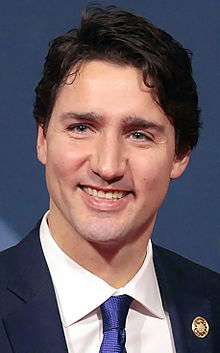
.jpg)
.jpg)

.jpg)
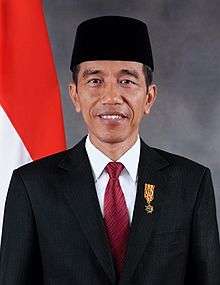
_(cropped).jpg)
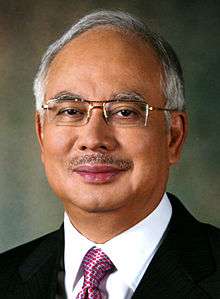
.jpeg)
.jpg)
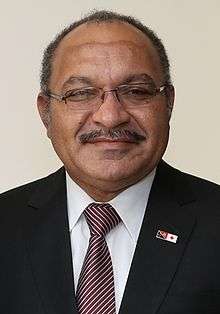

.jpg)

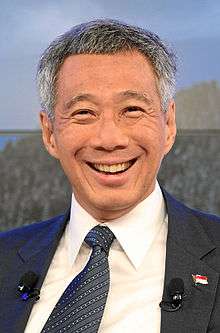
.jpg)
